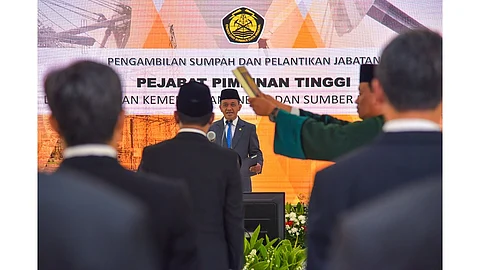

Indonesia plans 100 GW of solar, focusing on rural and remote area electrification
20 GW will be centralized, while 80 GW solar and 320 GWh BESS go to 80,000 villages
IESR highlights workforce, site selection, coordination, and community involvement as critical project success factors
Indonesia’s Minister of Energy and Mineral Resources, Bahlil Lahadalia, has said that his government is targeting the development of 100 GW of solar power plants (PLTS), targeting the solarization of rural and remote regions in the country.
The ministry does not specify any more than this, but the Institute for Essential Services Reform (IESR) shares that the government plans to add 20 GW of solar capacity as centralized projects.
The remaining 80 GW of solar and 320 GWh of battery energy storage system (BESS) capacity is planned to be distributed across 80,000 villages. These will be managed by the Merah Putih Village Cooperative (KDMP) to ensure reliable and affordable electricity to promote economic activities in rural areas.
While welcoming the initiative, IESR warns that the successful execution of this project may face the following key challenges and offers recommendations:
Site selection must factor in geographical conditions, electricity load needs, and ensure thetechnical and financial feasibility of the 80,000 projects. To address this, it recommends creating modular, plug-and-play designs with support from Indonesian engineering universities.
Shortage of skilled workers for building and maintaining solar plants and storage systems, with uneven availability across Indonesia. A 1 MW solar and 4 MWh of BESS project requires at least 30 to 50 workers of various skill levels over 9 to 12 months. IESR urges immediate workforce assessments, training, and preparing certified installers through collaboration with vocational training centers – especially involving local communities near project sites.
The project will need strong coordination among government bodies, local authorities, and private players. IESR suggests making it a National Strategic Program with a dedicated Task Force and Project Management Unit for professional oversight.
IESR stresses involving rural communities across all stages so they gain economic benefits, protecting their land rights, and ensuring the project follows a participatory, rights-respecting, and corruption-free approach.
“If implemented effectively, this project will become the largest rural electrification initiative and distributed renewable energy generation program in Southeast Asia, addressing the challenges of providing quality, equitable, and affordable energy for all Indonesians,” said IESR CEO Fabby Tumiwa.
Recently, IESR said the government targets increasing demand for solar power plants reaching up to 108.7 GW by 2060 (see Indonesia’s 108.7 GW Solar Goal Needs Industry Plan: IESR).
Within H1 2025, Indonesia’s installed power generation capacity increased by 4.4 GW year-on-year. Of this, 876.5 MW came from new and renewable energy projects, according to Lahadalia.
